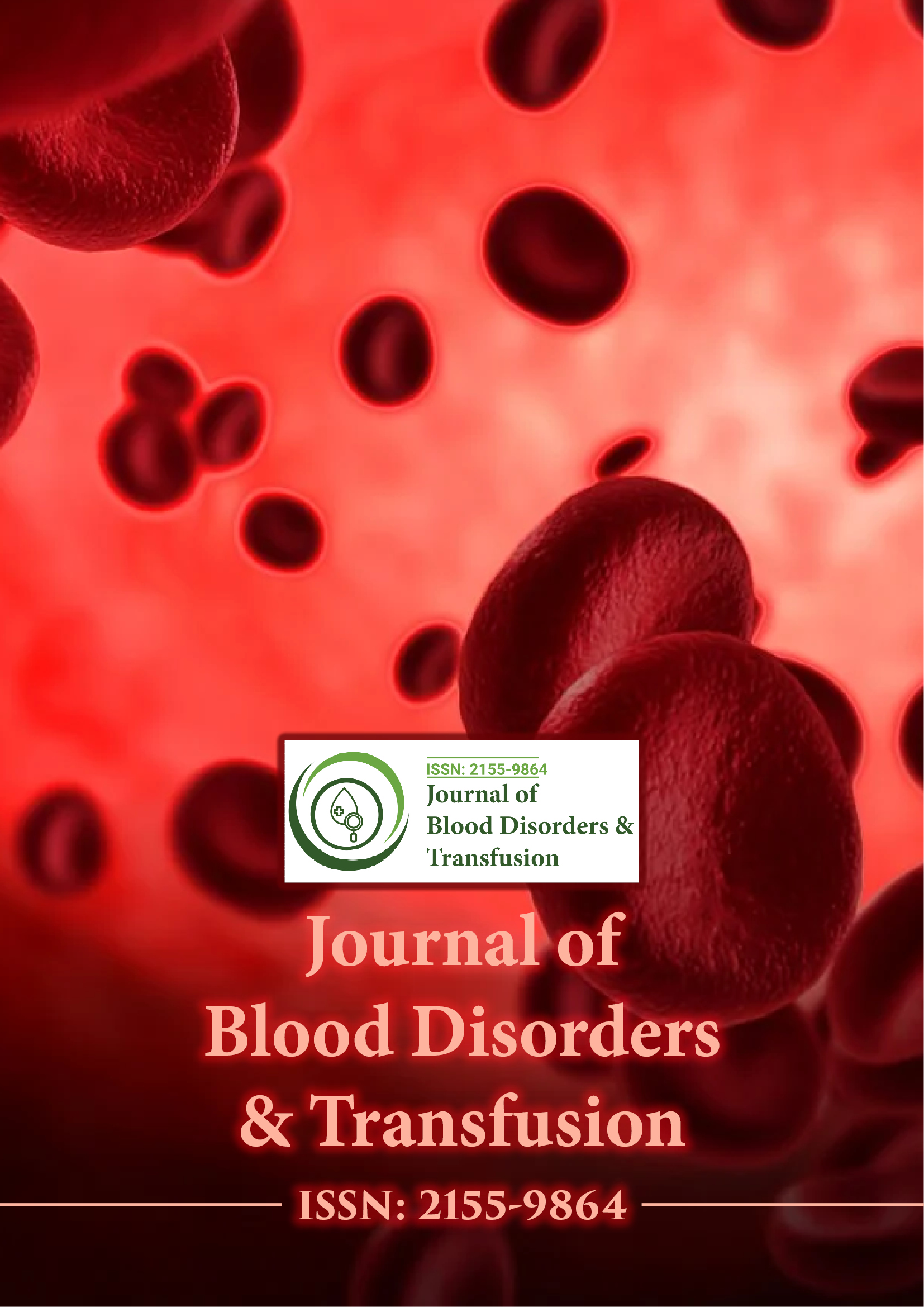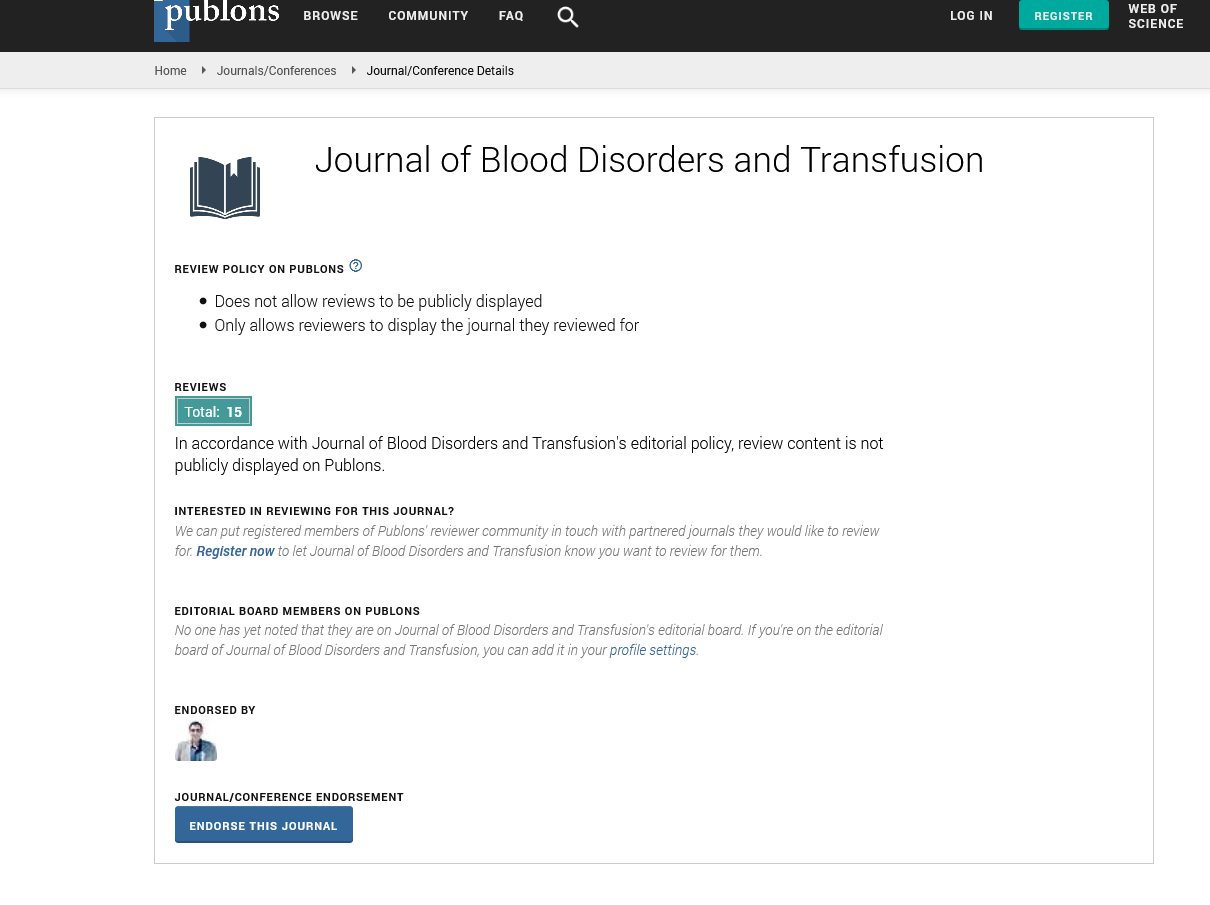Indexed In
- Open J Gate
- Genamics JournalSeek
- JournalTOCs
- Ulrich's Periodicals Directory
- RefSeek
- Hamdard University
- EBSCO A-Z
- OCLC- WorldCat
- Proquest Summons
- Publons
- Geneva Foundation for Medical Education and Research
- Euro Pub
- Google Scholar
Useful Links
Share This Page
Journal Flyer

Open Access Journals
- Agri and Aquaculture
- Biochemistry
- Bioinformatics & Systems Biology
- Business & Management
- Chemistry
- Clinical Sciences
- Engineering
- Food & Nutrition
- General Science
- Genetics & Molecular Biology
- Immunology & Microbiology
- Medical Sciences
- Neuroscience & Psychology
- Nursing & Health Care
- Pharmaceutical Sciences
Commentary - (2025) Volume 0, Issue 0
Evaluating Bleeding Disorders from Platelet Function Defects
Candelaria Ariens*Received: 28-Mar-2025, Manuscript No. JBDT-25-28994; Editor assigned: 01-Apr-2025, Pre QC No. JBDT-25-28994 (PQ); Reviewed: 15-Apr-2025, QC No. JBDT-25-28994; Revised: 22-Apr-2025, Manuscript No. JBDT-25-28994 (R); Published: 29-Apr-2025, DOI: 10.4172/2155-9864.25.S13.064
Description
Inherited platelet disorders represent a diverse group of rare genetic conditions affecting platelet quantity, quality, or function, leading to bleeding tendencies that vary widely in severity. These disorders arise from mutations in genes regulating platelet production, surface receptors, granule contents, or signaling pathways. Diagnosing these conditions requires a thorough understanding of both clinical presentation and specialized laboratory testing.
Inherited platelet disorders
Patients with inherited platelet disorders often present with mucocutaneous bleeding symptoms, which may include easy bruising, petechiae, prolonged bleeding after minor injuries, gum bleeding, nosebleeds and menorrhagia. Bleeding severity ranges from mild to severe, occasionally leading to life-threatening hemorrhage. The onset of symptoms frequently occurs in childhood, although some individuals may remain undiagnosed until adulthood.
Family history is an important component of clinical evaluation, as many inherited platelet disorders follow autosomal recessive or dominant inheritance patterns. Consanguinity may increase the risk of autosomal recessive disorders. Some disorders exhibit platelet morphological changes visible under light microscopy, aiding clinical suspicion.
Major inherited platelet disorders
Several well-characterized inherited platelet disorders contribute to bleeding tendencies.
Glanzmann Thrombasthenia (GT): GT results from defects in the platelet integrin αIIbβ3, which mediates platelet aggregation. Patients typically experience severe mucocutaneous bleeding. Platelet counts are usually normal, but platelet aggregation is profoundly impaired.
Bernard-Soulier Syndrome (BSS): BSS is characterized by deficiency or dysfunction of the glycoprotein Ib-IX-V complex, which is essential for platelet adhesion to von Willebrand factor. This disorder leads to moderate thrombocytopenia and giant platelets, accompanied by bleeding symptoms.
Storage Pool Disorders (SPD): These involve defects in platelet granules responsible for storing and releasing substances needed for platelet activation. SPD patients have normal platelet counts but impaired secretion, resulting in variable bleeding manifestations.
Gray Platelet Syndrome (GPS): GPS features a deficiency of alpha granules in platelets, leading to pale or “gray” platelets on blood smear. Patients often show mild to moderate bleeding and may develop myelofibrosis.
Challenges in diagnosis
Diagnosing inherited platelet disorders is complicated by several factors. Clinical symptoms overlap with acquired platelet dysfunctions caused by medications, systemic diseases, or immune conditions. Platelet function tests are sensitive to pre-analytical variables including sample handling, timing and patient preparation. Inconsistent testing protocols across laboratories affect reproducibility and interpretation.
Furthermore, genetic variants of uncertain significance can complicate molecular results. Integrating clinical, laboratory and genetic information requires expertise and multidisciplinary collaboration.
Management considerations
While this article focuses on diagnosis, understanding clinical features helps guide management. Patients with inherited platelet disorders benefit from bleeding risk assessment before surgery or invasive procedures. Platelet transfusions, antifibrinolytics, or recombinant factor may be used during bleeding episodes or prophylaxis. Genetic counseling is essential for affected families to understand inheritance patterns and reproductive options. Regular follow-up with hematology specialists supports optimal care.
Inherited platelet disorders present a complex clinical and diagnostic challenge due to their genetic diversity and overlapping symptoms. Careful clinical evaluation combined with stepwise laboratory testing including platelet counts, functional assays, flow cytometry and molecular diagnostics provides a comprehensive approach. Although challenges remain in interpretation and standardization, recent advancements have improved diagnostic accuracy. Multidisciplinary collaboration enhances patient care by ensuring precise diagnosis and appropriate management.
Citation: Ariens C (2025). Evaluating Bleeding Disorders from Platelet Function Defects. J Blood Disord Transfus. S13:064.
Copyright: © 2025 Ariens C. This is an open-access article distributed under the terms of the Creative Commons Attribution License, which permits unrestricted use, distribution, and reproduction in any medium, provided the original author and source are credited.

